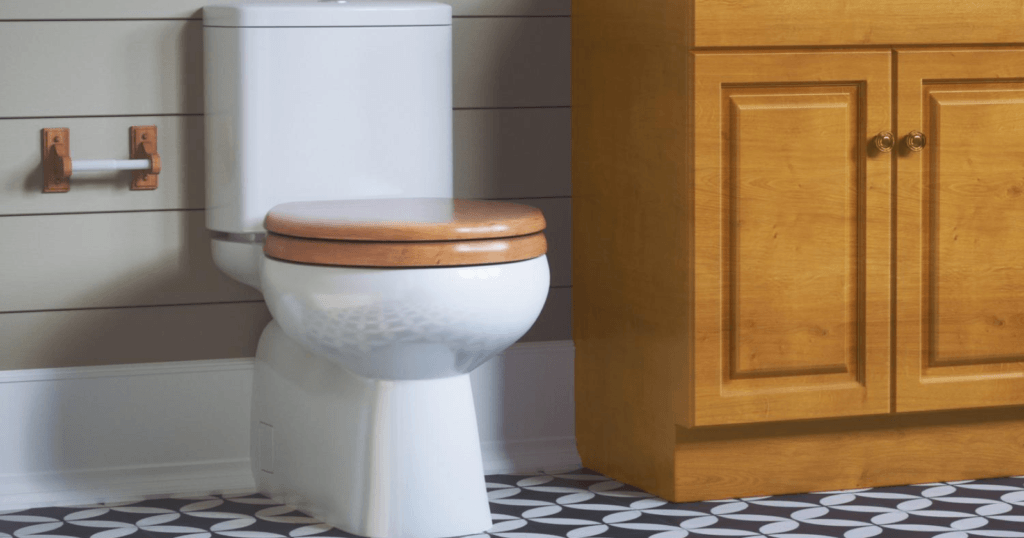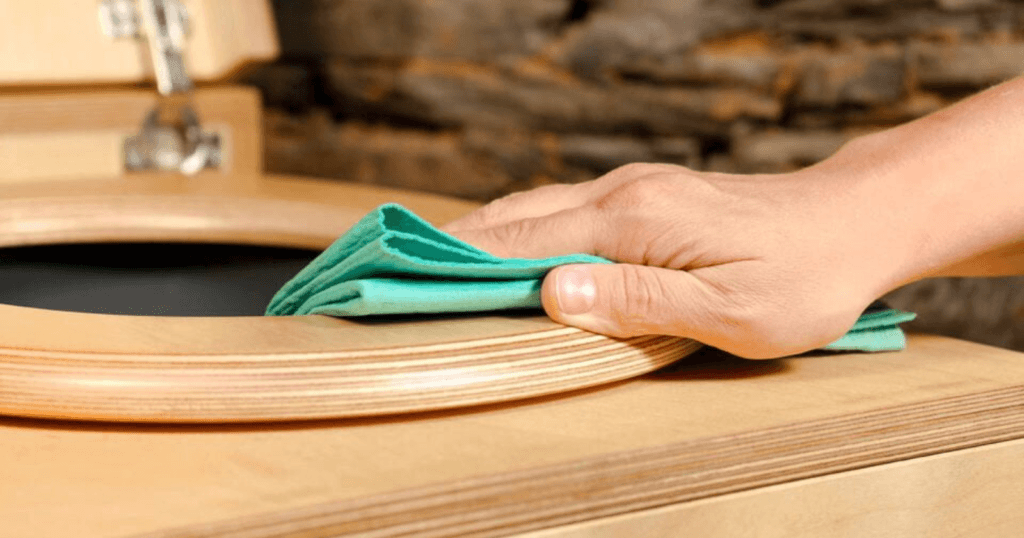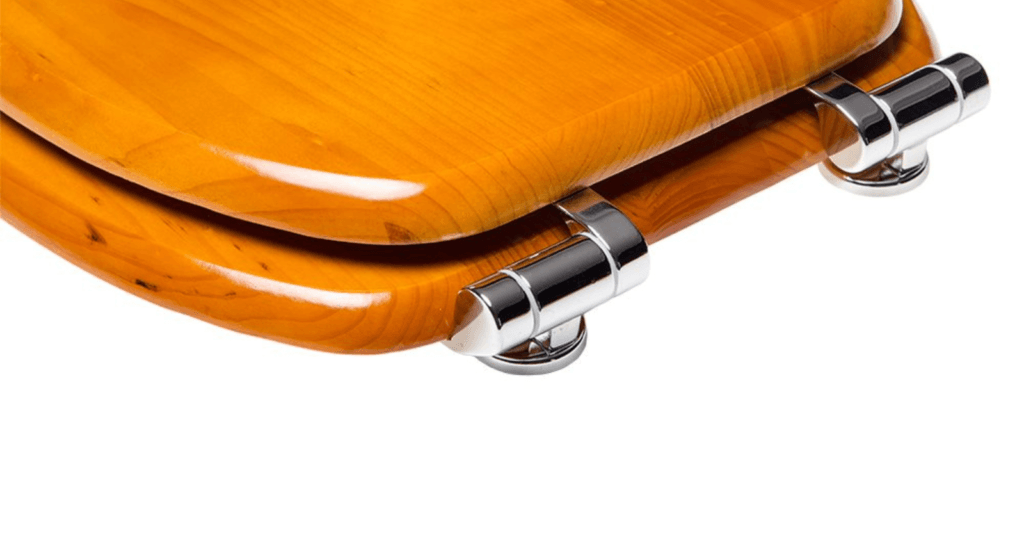
Keeping your bathroom clean is essential, and maintaining the quality of your fixtures is a crucial part of this process. If you have wood toilet seats, you might wonder about the best way to care for them. Understanding how to clean wood toilet seats properly ensures they remain in excellent condition and last longer. This guide will provide practical, gentle methods to clean your wood toilet seats without causing damage, using mild soap and water instead of harsh chemicals.
So, How Do You Clean A Wooden Toilet Seat?

Wooden toilet seats can add a touch of elegance to a bathroom. They also need special care to stay in good condition.
Wood is porous, which means it can soak up moisture. If not cared for properly, this can lead to problems like warping or cracking.
I clean my wood toilet seat with care to prevent damage. I avoid using harsh chemicals, which might harm the finish and the wood.
Here are my steps for cleaning wood toilet seats:
- Mix a solution of mild soap and warm water.
- Dip a soft cloth into the solution.
- Wring out the cloth so it’s damp, not dripping.
- Gently wipe the surface of the seat.
- Use a dry cloth to remove any excess moisture.
I dry the seat thoroughly to avoid moisture buildup. This helps prevent warping and keeps the wood in good shape.
I sometimes use a solution of white vinegar and water for deeper cleaning. Vinegar is a natural cleaner that is gentle on wood.
- Mild soap and water: Regular weekly cleaning
- White vinegar and water: Monthly deep cleaning
I also regularly check for any signs of damage. Small cracks or chips can let in moisture, leading to bigger problems.
I keep my wooden toilet seat looking great and lasting longer by following these steps. Regular maintenance is key to preventing damage and ensuring my bathroom stays clean.
Key Takeaways On How To Clean Wood Toilet Seats
- Use mild soap and water with a soft cloth for cleaning.
- Regularly check and clean the hardware and hinges.
- Routine maintenance keeps the wood in good condition.

Routine Cleaning Procedures
Keeping your wood toilet seat clean helps maintain its appearance and prevents bacteria and mold growth. Here’s the best way to clean and care for it daily and address more stubborn stains when needed.
Daily Cleaning
I start by preparing a cleaning solution. Mix a few drops of mild dish soap with warm water in a bowl or sink. I avoid harsh chemicals, as they can damage the wood.
I dip it in the soapy water using a soft cloth and gently wipe the toilet seat. I make sure to clean the top and underside, reaching all surfaces.
I use a soft-bristled brush for tougher areas but avoid scrubbing too hard.
Rinsing is key. I then dampen another cloth with plain water and wipe off any soap residue.
Drying the seat thoroughly with a third dry cloth is important to prevent moisture from seeping into the wood, which can cause mold growth.
Deep Cleaning
I use a mix of white vinegar and water for deep cleaning sessions. I fill a spray bottle with equal parts and lightly spray the seat. This helps sanitize and remove any lingering germs and odors.
I let it sit for about 10 minutes, giving it time to break down any dirt or bacteria. Then, using a clean cloth, I wiped down the seat thoroughly, making sure to get into all the nooks and crannies.
If there’s a stronger need for disinfecting, I use hydrogen peroxide. I apply it with a cloth and allow it to sit for 5 minutes before rinsing and drying the seat.
Handling Stubborn Stains
I create a paste using baking soda and water when faced with stubborn stains. I apply this paste directly to the stained area with a cloth, allowing it to sit for a few minutes.
Afterward, I gently scrub the area using a soft cloth or sponge. A little white vinegar added to the baking soda paste can be more effective for persistent stains.
Once the stain is removed, I rinse the area with warm water and dry it completely.
Following these steps, I ensure that my wooden toilet seat stays clean, sanitary, and well-maintained. Daily and deep cleaning routines and the right products help keep it in top condition.

Caring for Hardware and Hinges
Proper care for wood toilet seat hardware and hinges can prevent rust and damage. Keeping these parts clean and secure helps ensure the longevity of your toilet seat.
Removing Rust and Buildup
Rust and buildup on hinges can cause problems. I start by using an abrasive cleaner. A good cleaner helps scrub away rust without damaging the hardware.
I apply the cleaner with a cloth, using a circular motion. This approach reaches all areas and effectively removes buildup. Scratches can occur if I’m too rough, so I stay gentle but firm.
Combine some cleaning solution and water in a bucket. Dip a brush or cloth in and scrub the hinge. For stubborn rust, I let the cleaner sit for a few minutes before wiping it off.
Lastly, I rinse the area with clean water to remove any leftover cleaner. Drying the hinges with a dry towel prevents new rust from forming.
Securing Loose Hinges
Loose hinges can make the seat unstable. I regularly check if they need tightening.
If I find loose hinges, I first disinfect the area to remove urine or other residues.
Using a screwdriver, I tighten the screws just enough to secure the seat without over-tightening, which can cause cracks or damage.
Sometimes, screws or bolts are worn out. In that case, I replace them with new ones to ensure the seat stays in place. Preventing further issues involves regular checks and maintenance.
Maintenance tips to avoid loose hinges include avoiding placing too much weight on the seat and not slamming it shut. Regular inspection helps catch problems early.

Preventive Measures and Tips
Keeping a wood toilet seat clean and in good condition involves regular maintenance and avoiding common mistakes that can cause damage over time.
Regular Maintenance
I keep my wood toilet seat clean by wiping it down with a mild detergent mixed with water.
Using soft cloths is key since abrasive materials can scratch the surface and remove the finish.
When I encounter stubborn stains, I use a paste made from baking soda and water, rubbing it gently to avoid damage.
It’s important to dry the seat thoroughly after each cleaning. Moisture can warp the wood if left unchecked.
I also apply a sealant periodically to protect the wood from moisture and general wear. This helps prevent cracks and discoloration, ensuring the toilet seat stays in great shape for longer.
To avoid germs, I disinfect the seat regularly using an appropriate cleaner.
I try to use products specifically safe for wood and steer clear of bleach and other harsh chemicals. These can strip the paint and finish, making the seat more vulnerable to damage.
Avoiding Common Mistakes
One mistake I see often is using too much water during cleaning. Wood can absorb water, causing it to swell, warp, or crack.
Instead, I dampen a cloth just enough to clean without oversaturating the seat.
People sometimes use abrasive cleaners, thinking they will clean better, but these can scratch and damage the wood. I always opt for non-abrasive cleaning agents.
Gloves are a good idea, too, to protect my hands and ensure I handle cleaning agents safely.
Keeping the toilet lid up too often can also be a problem. Dust and debris can settle into the nooks and crannies, breeding bacteria.
Good airflow is important, but I close the lid when not used.
Lastly, I avoid placing heavy objects on the seat or banging it shut. This can cause the wood to crack or the finish to chip.
Conclusion
Cleaning wood toilet seats doesn’t have to be a chore. With the right tools and methods, it can be easy and quick.
First, regular cleaning helps maintain the look and hygiene.
Wipe it down daily with a damp cloth and mild soap.
I use a mixture of equal parts vinegar and water for deeper cleaning. This solution disinfects without harsh chemicals.
To keep the wood in good shape, avoid soaking it. Excess moisture can cause damage.
Always dry the seat thoroughly after cleaning.
Following these steps, my wood toilet seat stays clean and lasts longer. Simple routines make a big difference.
Frequently Asked Questions
When it comes to maintaining the appearance and hygiene of your wood toilet seat, you might have questions about stain removal and the use of natural cleaners. I’ve outlined the answers to these concerns below.
What is the best method to remove stains from wooden toilet seats?
To effectively remove stains from wooden toilet seats, it’s important to use a gentle cleaner that won’t damage the wood finish. I recommend creating a paste with baking soda and water, applying it to the stained area, and gently rubbing it with a soft cloth. Rinse with water and dry with a towel immediately.
Can natural cleaning solutions be effective for wooden toilet seats?
Indeed, natural cleaning solutions can be quite effective for cleaning wooden toilet seats. For regular maintenance, I use a mixture of vinegar and water. It’s safe for the wood and does a good job at sanitizing the surface. However, ensure the solution is diluted properly to avoid any potential damage to the wood’s protective coating.
